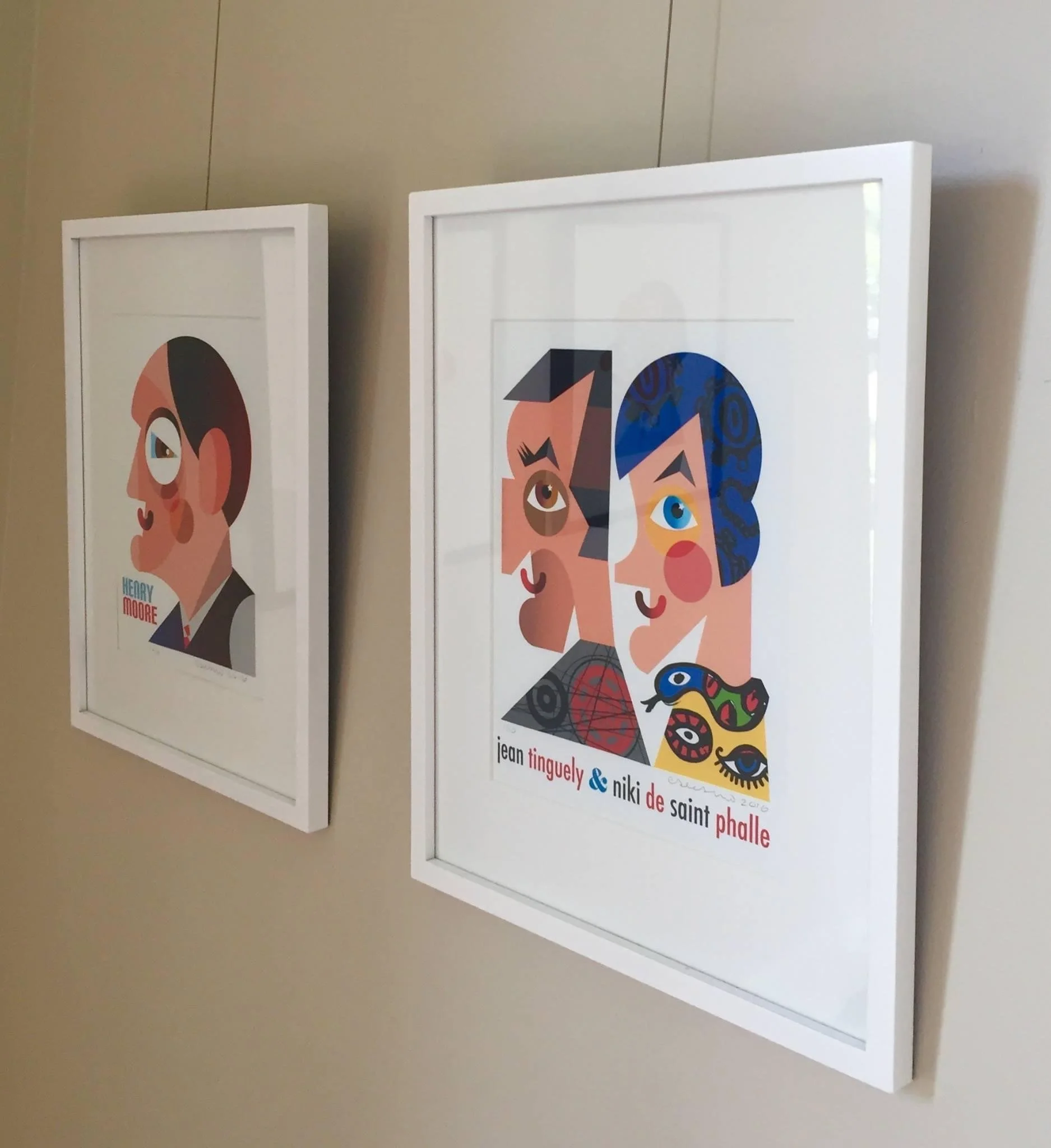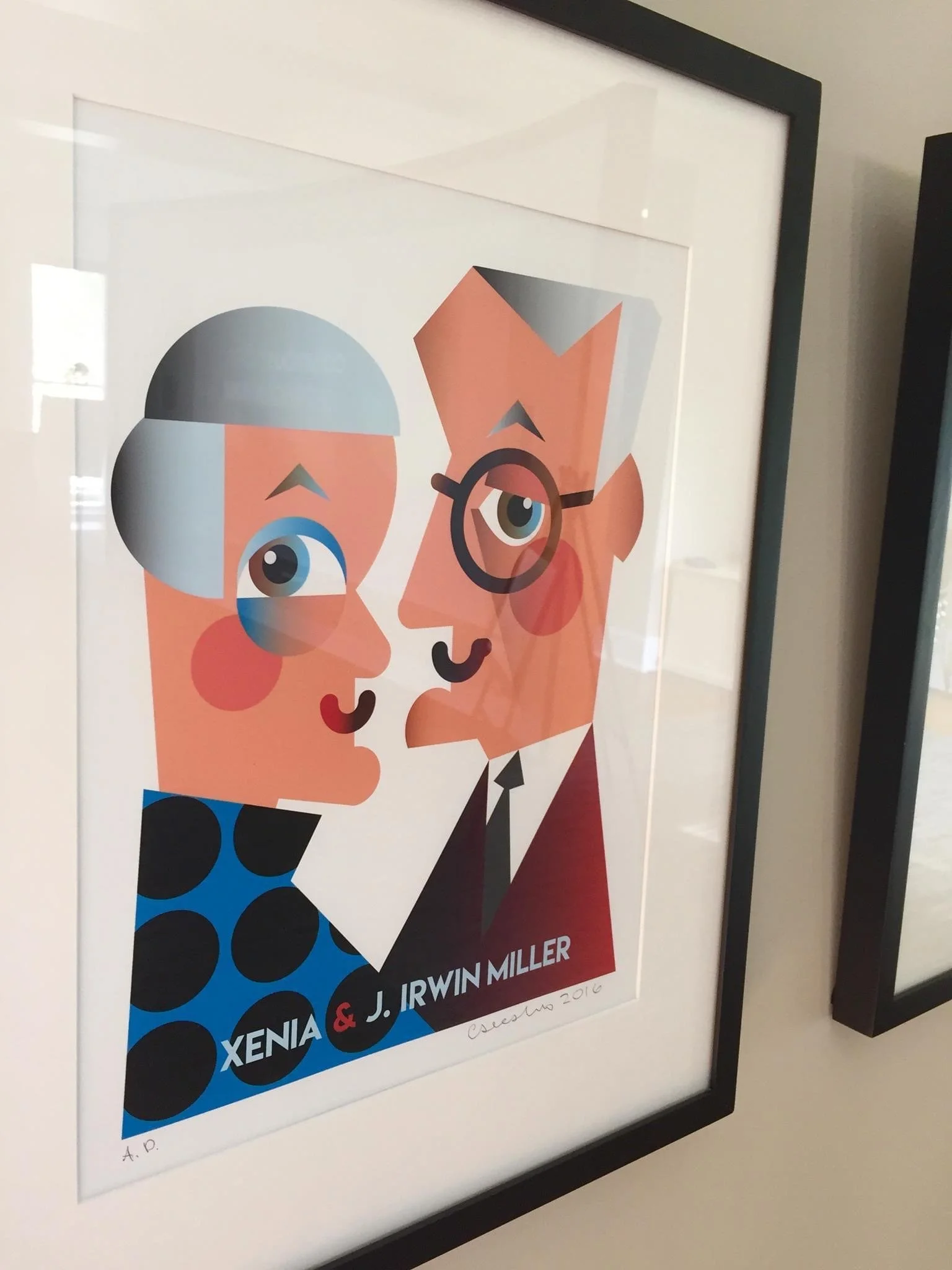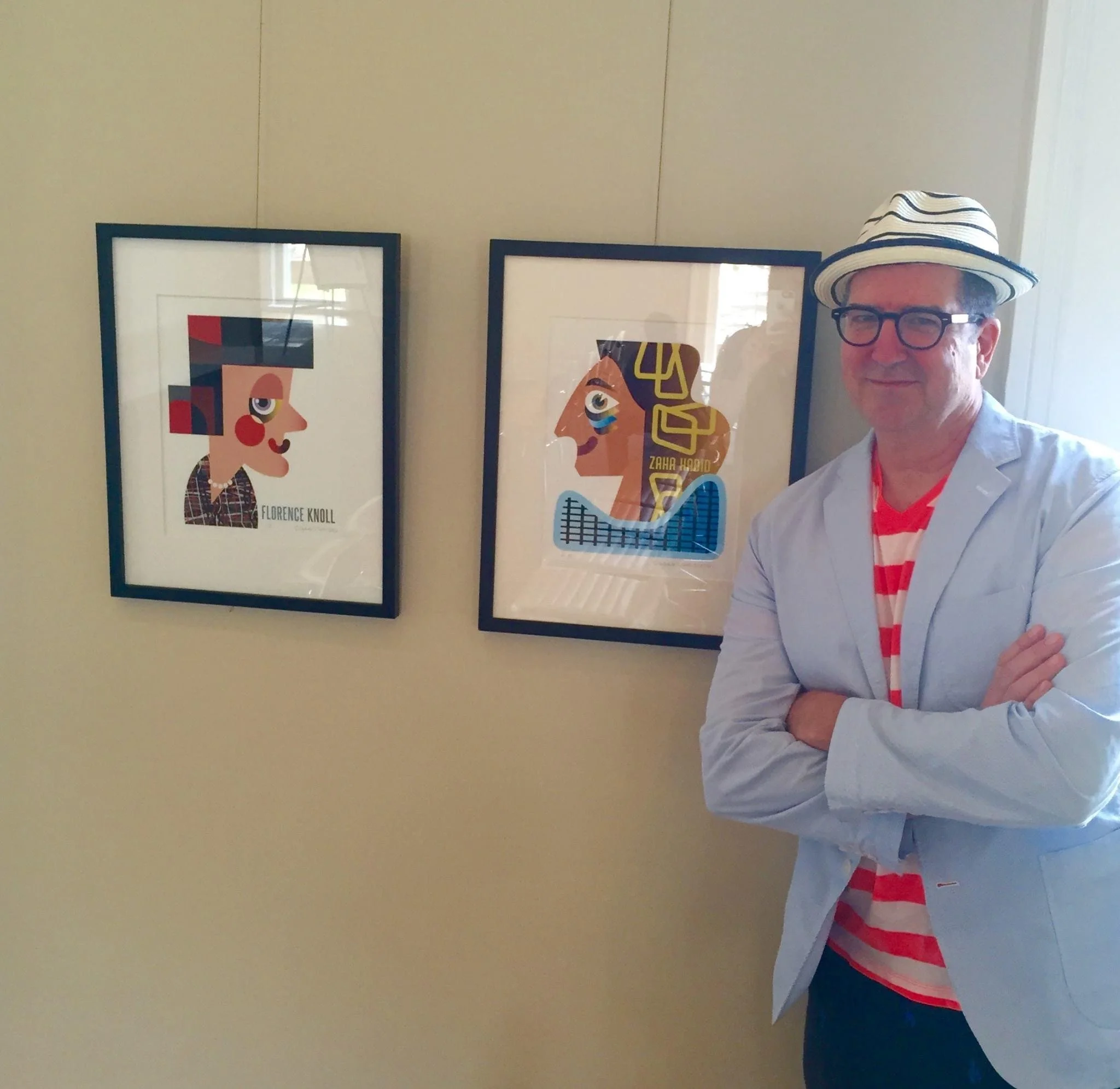Portraits of Columbus, IN: the many faces of modern design
“David Lee Csicsko grew up in an Indiana of split-level ranches, space age neon, cocktail parties, hospitality, and lots of wit. Modernism was ubiquitous but the ascetic, rigid rules advocated by the Bauhaus a generation earlier no longer dominated. In postwar America, a hybrid modernism emerged as design was inflected by the patterns of use, the preoccupations, the tastes of the places where it alighted. Columbus is a snapshot of that cultural encounter: the international wave of modernism shifting its shape as it traveled further inland.”
My text accompanied a selection of portraits of modernist designers by David Lee Csicsko, shown at the Columbus Visitor Center
Columbus, IN, is a hallowed site of modern design. Thanks to an ambitious design grant program established by patrons Xenia and J. Irwin Miller, the town has become an incubator for architecture and landscape. An exhibition of portraits by artist David Lee Csicsko brought the iconic figures of Columbus’s mid-century boom into focus. Csicsko drew the images with respect and humor, accessorizing each subject — from Florence Knoll to Eliel Saarinen — with the design gestures for which they are known.




In my exhibition text, I emphasized the convivial, collegial atmosphere in which this postwar experiment took place. And I spoke about Csicsko’s own experience as a young man growing up amid Midwestern modernism.
The exhibition, on view at the Columbus Visitor Center, serves up an easygoing introduction to this site of design pilgrimage.
The full text of my exhibition intro panel is below.
David Lee Csicsko grew up in an Indiana of split-level ranches, space age neon, cocktail parties, hospitality, and lots of wit. Modernism was ubiquitous but the ascetic, rigid rules advocated by the Bauhaus a generation earlier no longer dominated. In postwar America, a hybrid modernism emerged as design was inflected by the patterns of use, the preoccupations, the tastes of the places where it alighted. Columbus is a snapshot of that cultural encounter: the international wave of modernism shifting its shape as it traveled further inland.
Csicsko’s portraits are as human and warm as the moment they describe. Like friends around a dinner table — or, more aptly, a conversation pit — the artists and designers gathered here are dressed up, chatty, opinionated. The festive mood is set by the exhibition’s logo, Csicsko’s animated homage to the iconic shape of Columbus’s capital “C” drawn by the great graphic designer Paul Rand. The Millers play host to a colorful party. The constellation of Saarinen the Younger, Alexander Girard, and landscape designer Dan Kiley is close by. Influential designers from an earlier era, the poets of the prairie Louis Sullivan and Frank Lloyd Wright, drop in for a visit. Sculptors Henry Moore and Jean Tinguley add a finer texture, a scale of public art, into the conversation.
Each portrait telegraphs the personality of its subject, using minimal gestures of form and pattern. Csicsko plants clues in each image, making it a kind of party game. Lean in to discover that Saarinen’s bust mimics the shape of his First Christian Church. Kiley’s coat is patterned after the geometry of the gardens he designed for the Miller residence. All of Harry Weese is an interplay of nautical triangles. And Florence Knoll shows off a jacket as beautifully woven as the textiles for which her furniture is famous.
This is the kind of gathering that could only happen in Columbus, in that Midwestern moment of revolutionary ideas and chronic friendliness. Csicsko imagines it so vividly, you can just hear the witty banter and taste its cocktails

